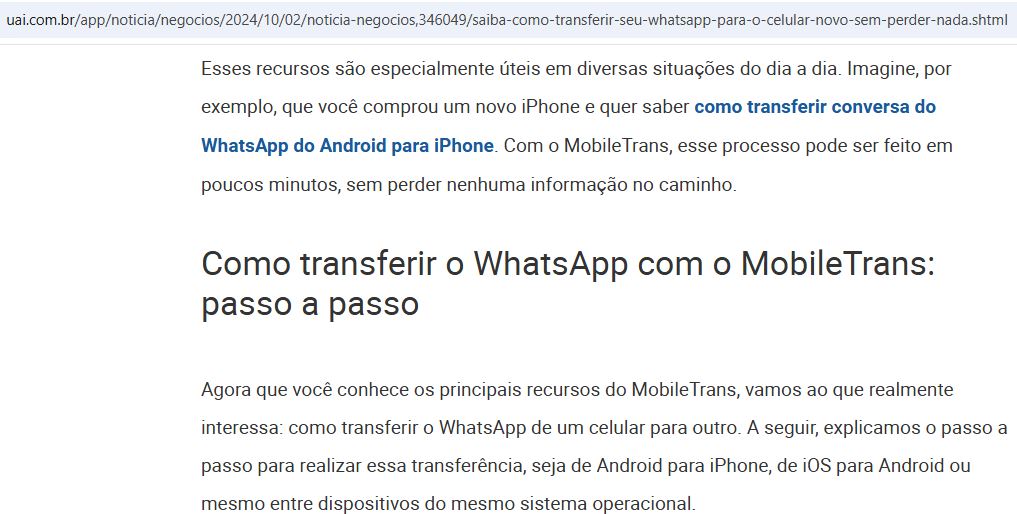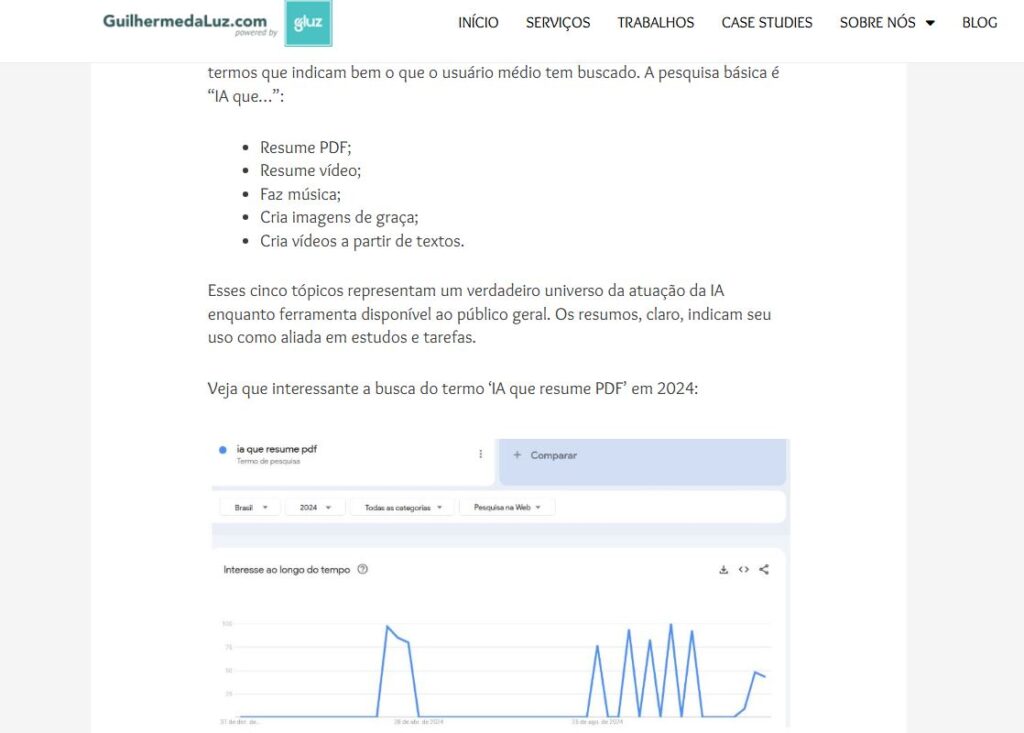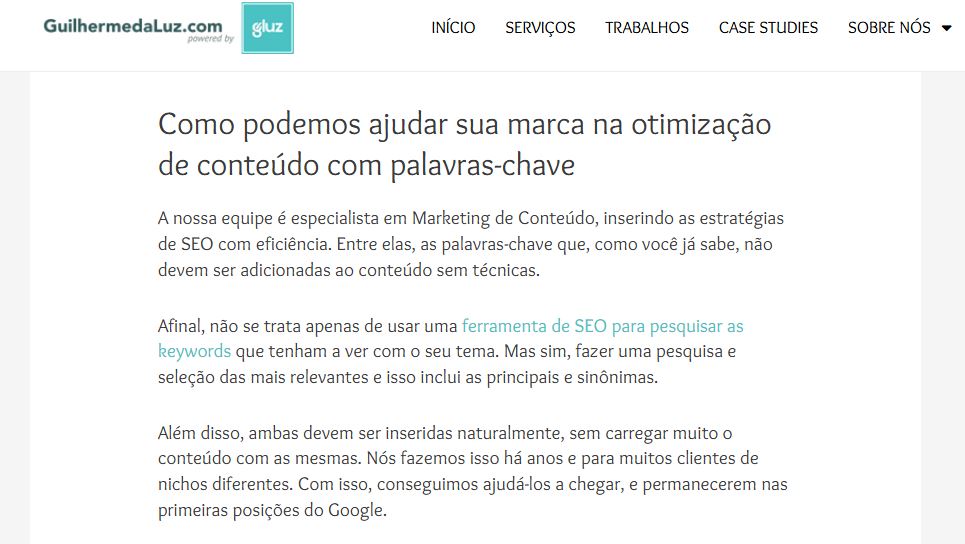
It’s no news that the internet is a battlefield when it comes to trying to attract users to your content. If appearing on the first page of Google was already important more than 20 years ago, today it is non-negotiable. What’s more, it involves not only the search engine, but also social networks and other virtual spaces.
Behind this, we all know, are high-level SEO practices. In this respect, the equation remains simple: the better the optimization of the content, taking into account keywords, transition words, appropriate size and usability, the better.
There are, however, other aspects that can no longer be ignored; SEO, like so many other related areas, is under constant pressure for change, and the insertion of technologies such as AI and algorithmic development by search engines and social networks only serve to further challenge those who create optimized content.
However, no matter how well done an SEO job may be, user experience design cannot be overlooked.
Why UX and SEO have to go hand in hand
Many people think that SEO and UX are synonymous – if one is good, so is the other. Just remember that, in a metaphorical chronology, until yesterday we were using KWs full of spelling and agreement errors simply to please the algorithm. Bad luck for the user who opened the page.
The user, in fact, has changed along with search engines and algorithms. Today, they expect quality and good usability from the site from the first click on the CTA. As a result, SEO ranking factors now have to go hand in hand with improved UX.
We are constantly being challenged to evolve in this and other areas. Today’s user is more demanding, and rightly so. It’s no exaggeration to point out that, with AI content dominating a multitude of areas, humanized UX is worth gold.
At the end of the day, the logic is still simple: SEO attracts readers, but advanced UX drives CTA activation, engagement and, quite simply, conversion. You therefore need to arm yourself with practical tools to guarantee these UX improvements.
Design and usability as tools
The first aspect of improving UX is fairly basic and predictable: offering a pleasant and practical space in terms of design and usability. You don’t need to guarantee the best-looking page in the world, but rather a virtual space in which the reader feels confident to enter and comfortable to stay.
Along with design, of course, comes usability. There are plenty of examples of pages that have failed to take advantage of this; when this happens, all the painstaking SEO work is lost simply because there is no good usability – so UX is compromised in the absence of final conversion.
Finally, we mustn’t forget that users don’t necessarily want to spend a lot of time on our content. Expectations have to be met, however challenging it may be to do so, and the best way is to put yourself in the end user’s shoes. After all, that’s the concept of user experience design.
Increasing screen time
One of the biggest challenges for any content creator and, by extension, SEO specialist today is to keep the user on the screen as long as possible. It’s fair to say that never before has there been so much competition, and the multi-use of screens is an age-old reality – let anyone throw the first stone who has never watched a series on TV with their cell phone in hand and their laptop on.
Bearing this in mind, we must once again stress the importance of user experience design: only a job well done with the ideal target audience in mind will guarantee an increase in screen time. It’s a challenge for all of us, of course, as it involves design, content and appeal. The first step, however, is still to generate initial interest.
Reducing bounce rates
Dedicating ourselves to SEO ranking factors is a practice we should all keep up. However, it is important to evaluate not only what has worked, but also what is negative.
It’s not always easy to understand what the user is looking for, or the reasons why they aren’t converting access into clicks on the CTA or a final purchase. However, making an effort to discover the causes of low access times, sub-optimal click volumes and, of course, poor indexing are vital.
There is no magic formula, that’s a fact. What there is, however, is product development, conscious (and sensible) use of artificial tools, such as AI in its various guises, and understanding the needs of the average user. It is only by evolving with the tools and techniques that we have a chance of making the equation involving SEO and UX reach its full potential.
How we guarantee the best user experience in SEO content
The production of SEO content by our team is focused on guaranteeing the best user experience. When the content is for our portals, as well as offering better usability of the site, we think about content that responds to the reader’s pains.
In the same way, we also create content for partner portals, including link building actions. In addition to developing the text within the proposed theme, we also use SEO techniques.
However, unlike some SEO copywriters, this is done in such a way as to make the text look natural. In other words, the main and secondary keywords are inserted naturally. This ensures that the content is more enjoyable to read, without losing the opportunity to use strategies to rank on Google.
In general, among our actions:
Text construction
Our writing team ensures easier reading by distributing the content between H2 and H3. This allows the user to quickly find the answers they are looking for in a more dynamic reading.
In addition, we insert bullets points, images, table of contents and graphics, depending on the type of content, allowing for better visibility of the content. Here’s an example:
Note in the image that we have inserted bullets points and an image with a graphic that complements the reading.
In addition, our content doesn’t have a ‘giant’ text between H2/H3. This is also very important, as it influences the impact of the user experience.
Highlighting hyperlinks
Yes, highlighting hyperlinks is important, as they complement the user’s reading. Therefore, use different colors to attract attention and show that the anchor text is clickable. This allows the reader to find out more about a particular subject of interest.
Here’s how we do it:
In the image, you can see that the reader has the opportunity to learn about these SEO tools. Although it is not the main topic of the content, the link helps the user to obtain important information. In other words, having a list of these tools to find keywords.
But when working with link building, be aware of this issue too. After all, many partner portals also highlight hyperlinks. So take care to insert your link in important keywords. Check out an example below of a backlink from our client that we inserted into a piece of content made by our team and posted on a partner portal:

Note, in the image, that the backlink was inserted naturally and in an important anchor text for Wondershare MobileTrans, our client. This helps to arouse the reader’s interest in clicking to find out more, generating greater visibility for the client’s portal. It also provides a better user experience.
Internal search engine
Having an easy-to-use internal search field is very important for ensuring a better user experience. After all, when the reader is on your portal, they already know your niche and may want to look for more information.
So make sure you invest in this tool when creating the layout of your portal. It’s simple, but very functional.
In addition to these strategies, we also take care of our portals. To do this, we fix 404 errors, broken links, Spam Score and many others. After all, we’re always auditing SEO content and correcting errors.
So, now that you know about the impact of user experience on SEO and how to guarantee the best experiences, put these tips into practice. But if you’d like to rely on experts on the subject, get in touch with our content marketing team.



